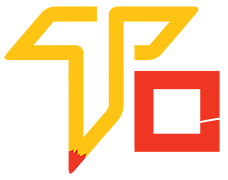Who this 3D animation course is for?
The animation course’s target audience can vary depending on the course’s specific content, complexity, and objectives. However, in general, animation courses are typically designed for: Beginners, Intermediate-level students, Professionals seeking to enhance their skills, Students pursuing careers in animation, Hobbyists and enthusiasts.
Why take this 3D animation course?
Here are some compelling reasons why you might consider enrolling in an animation course:
- Learn Animation Fundamentals: Animation courses often start with the basics, teaching fundamental principles such as timing, movement, and storytelling. This strong foundation is essential for anyone aspiring to be a skilled animator.
- Master Animation Software: Many courses focus on popular animation software like Adobe After Effects, Maya, or Blender. Learning these tools can open up opportunities in the animation and film industries.
- Career Advancement: If you’re already working in the animation industry, taking a course can help you stay current with the latest techniques and software updates, improving your chances for career advancement.
- Creative Expression: Animation is a fantastic medium for expressing ideas and stories. Taking a course can help you unleash your creativity and bring your imagination to life.
- Diverse Career Opportunities: Animation skills are in demand across various industries, from entertainment (movies, TV shows, video games) to advertising, education, and marketing. Completing an animation course can broaden your career prospects.
- Networking Opportunities: Many animation courses are conducted in group settings or online platforms, giving you a chance to connect with fellow students, instructors, and industry professionals. Networking can be valuable for future collaborations or job opportunities.
- Portfolio Development: Courses often involve practical projects and assignments, helping you build a strong portfolio to showcase your skills to potential employers or clients.
- Feedback and Guidance: By enrolling in a course, you’ll have access to experienced instructors who can provide valuable feedback and guidance throughout your learning journey.
- Self-Paced Learning: Many online animation courses allow you to learn at your own pace, making it convenient for those with busy schedules or other commitments.
- Personal Growth: Animation requires perseverance, attention to detail, and problem-solving skills. Engaging in an animation course can foster personal growth, discipline, and a strong work ethic.
What you will learn in 3D animation course?
Here are some common subjects you might encounter in an animation course:
- Animation Principles: You will learn the foundational principles of animation, including timing, spacing, squash and stretch, anticipation, follow-through, and overlapping action. These principles form the basis of creating convincing and appealing animations.
- Storyboarding: Storyboarding involves planning the sequence of events in an animation, similar to a comic strip. You will learn how to visually map out scenes and shots, helping to organize and plan the animation process.
- Character Design: Understanding character design is crucial in creating unique and memorable animated characters. You may learn about creating expressive and visually interesting characters that suit the story’s needs.
- Drawing and Sketching: If the course involves 2D animation, you’ll likely learn drawing and sketching techniques, allowing you to create frame-by-frame animations.
- Computer Animation Software: Courses might teach popular animation software such as Adobe Animate, Toon Boom Harmony, Autodesk Maya, or Blender. You’ll learn how to use these tools to bring your creations to life.
- 3D Modeling and Rigging: In 3D animation courses, you may learn how to model and sculpt 3D characters and objects, as well as rigging them to create flexible and controllable animation rigs.
- Keyframing and Motion Curves: You will explore how to set keyframes to define the start and end points of animation movements and how to use motion curves to control animation timing and smoothness.
- Animating Objects and Environments: Animation isn’t limited to characters alone; you’ll also learn how to animate objects, backgrounds, and environments to create dynamic and immersive scenes.
- Lip Sync and Dialogue Animation: If your course covers character animation with dialogue, you’ll learn techniques for lip-syncing and synchronizing character movements with spoken words.
- Special Effects (VFX): Some courses might include lessons on adding special effects to animations, like explosions, particle systems, and other visual elements.
- Teamwork and Collaboration: In certain animation courses, you may work on group projects, teaching you the importance of teamwork and collaboration in the animation industry.
- Critique and Feedback: Constructive criticism is crucial in improving your animation skills. Your instructors and peers will likely provide feedback on your work, helping you refine your abilities.
SALARY & PACKAGES
Entry-Level/Junior 3D Animator:
Salary Range: ₹2.5 lakh to ₹5 lakh per annum
Mid-Level 3D Animator:
Salary Range: ₹5 lakh to ₹10 lakh per annum
Senior 3D Animator/Lead Animator:
Salary Range: ₹10 lakh to ₹20 lakh+ per annum
JOBS & PROFILES
There are many job profiles are avaliable in varanasi & all over India. Such Job Profiles name is – 3D Animator, Senior 3D Animator, 3D Visualizer, Technical Animator, Visual Effects Animator, etc.

Charges & duration of 3D animation
Duration : 12 month
Charges : 12,000/-
3D animation course syllabus details
- Overview of 3D animation and its applications
- Introduction to 3D software (e.g., Autodesk Maya, Blender, Cinema 4D)
- Understanding the user interface and navigation within the software
- Basic modeling techniques: creating simple 3D objects
- Advanced modeling techniques: creating complex 3D objects
- Working with polygons, NURBS, and subdivision surfaces
- Texturing and UV mapping: applying textures to 3D models
- Introduction to sculpting: creating organic shapes and characters
- The 12 principles of animation
- Keyframe animation: creating movement by setting key poses
- Easing and timing: creating realistic motion
- Animation curves and tangents
- Character rigging: creating a skeleton and controls for characters
- Weight painting: adjusting the influence of bones on the mesh
- Character animation techniques: walk cycles, run cycles, and more
- Lip-sync animation: synchronizing character movements with dialogue
- Understanding lighting principles and techniques
- Setting up virtual lights in a 3D scene
- Global Illumination and Ray Tracing
- Rendering settings and output options
- Particle systems: creating effects like fire, smoke, and explosions
- Dynamics and simulations: creating realistic physics-based animations
- Green screen compositing and integration of live-action footage
- Advanced character animation: emotion, expressions, and body language
- Character interaction and reacting to the environment
- Cinematic camera techniques: framing and storytelling through camera work
- Advanced keyframe and motion capture blending
- Applying the skills learned in previous modules to create a comprehensive 3D animation project
- Emphasis on teamwork and collaboration
- Instructor feedback and guidance during the project’s development
- Preparing a professional portfolio showcasing the best work from the course
- Presentation and self-promotion techniques for aspiring 3D animators
- Guest lectures from industry professionals
- Job opportunities and career paths in 3D animation
- Industry trends and best practices
Related – 2D animation
